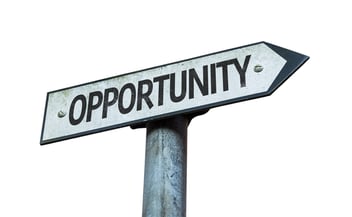Have you ever noticed how a song’s melody or lyrics can be attractive to one, but not another. How many times has a friend of yours shared with you a passage from a book they read and told you it made them cry but when you read it yourself, you don’t feel the same barrage of emotions?
Have you ever wondered why this happens?
It’s because not every message appeals to everyone. No matter how beautifully crafted and poetic a message is, if a person who is reading it is not ready to hear it, or if his or her situation does not resonate at all with the message you are getting across, then the effort you spent on composing and sharing it will be rendered futile.
When asked to address a crowd for example, say you’ve been invited to give a speech at a high school graduation, it makes sense to tailor your speech to the experiences that are mostly shared by your audience which, in the case given, the graduating students.
If you are a corporate executive who rose from the ranks and are asked to give a message to inspire junior colleagues, you do the same thing: you write your speech in a manner that would make it resonate to those younger employees in your company.
In the same way, when you are interacting with prospects at any time during an inbound sales process, it is imperative that you tailor your message to the circumstance that your prospect is in. Doing so would increase the chances of them reading what you have to say because it resonates to the challenges they go through, and this is necessary for you to gently guide them to an eventual purchase.
With the internet, consumers of this generation have access to all sorts of information they may need. Before making any purchase, you can expect that a person living in this digital era already conducted some research on their own.
As HubSpot defines it: the active research process someone goes through leading up to a purchase, the way your customers buy your product is referred to as the Buyer’s Journey.
Having a good understanding of the buyer’s journey will greatly help you in your interaction with your prospects and even then, when they have already made a purchase and have transitioned into a regular customer.
To get a better grasp of the buyer’s journey, let’s start by discussing what are the stages of a buyer’s journey, and why it’s important to understand the stages of a buyer’s journey in the first place.
Read on!
Stages of a Buyer’s Journey
The buyer's journey is made up of three stages, namely: the awareness stage, the consideration stage and finally, the decision stage.
In the awareness stage, your prospects are still identifying a particular challenge or pain-point in their day-to-day lives. They are not exactly aware of the existence of this problem or pain-point that they are experiencing, but they are in the process of realizing what it is. This means that they are not even out to look for solutions that you may have for them in the form of whatever product you are selling. And in most cases, they won’t even be aware that your company exists.
This stage is also where they realize a problem that they have, and then start looking for a solution. And then in their attempts to look for a solution, they find you and other companies who provide the same solutions or products as you.
While deep in their research, they will probably have a ton of tabs opened on just one window, but eventually, these windows will diminish in number and what’s left are the top contenders. This is when they enter the next stage which is the consideration stage.
In the consideration stage, buyers are already prepared to evaluate different products. Here, they have already become aware of the problem they are facing and have even named it. Therefore, they are ready to find a solution for it. It can be observed in this stage that prospects normally categorize the possible solutions and weigh the pros and cons of every category of solutions. They educate themselves by consuming more content, until they finally gain clarity on the topic.
Then they arrive at the last stage of the buyer’s journey: the decision stage.
The decision stage is when they have already decided on a solution category. They have already weighed all the pros and cons and have chosen the one that truly answers to their needs and circumstances.
Why It Pays to Understand the Stages of a Buyer’s Journey
Now you might wonder, what is the relevance of all that?
What use is there in knowing what are the stages of a buyer’s journey?
You see, when you don’t make the effort of outlining and understanding the buyer’s journey, you would most probably resort to following the traditional sales process which is to prospect, demo, and then close.
Buyers don’t like sitting through all that. Not only do they not have the time, they already know you are going to sell them something and they despise that. What they want is to be educated and given guidance throughout their buyer’s journey.
Understanding what is the buyer’s journey and knowing what are the stages of a buyer’s journey enable you to provide the most value to prospects by giving them the kind of messaging and information they need depending on whichever stage they are in their buyer’s journey.
This is essentially what we meant when we were talking about messages having different meanings to different people. Having a good grasp of what the buyer’s journey is and its stages will ultimately guide you in your interactions with prospects. And this is key to leading them into making a purchase, which, after all, is the ultimate goal of your entire inbound sales process.

 Understanding the Stages of a Buyer's Journey" loading="lazy">
Understanding the Stages of a Buyer's Journey" loading="lazy">


